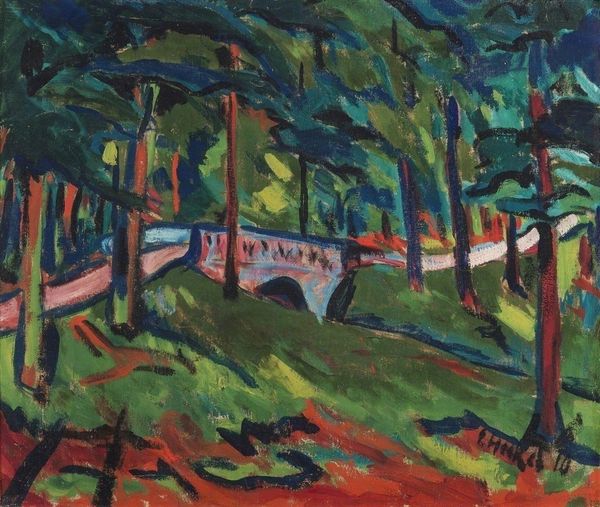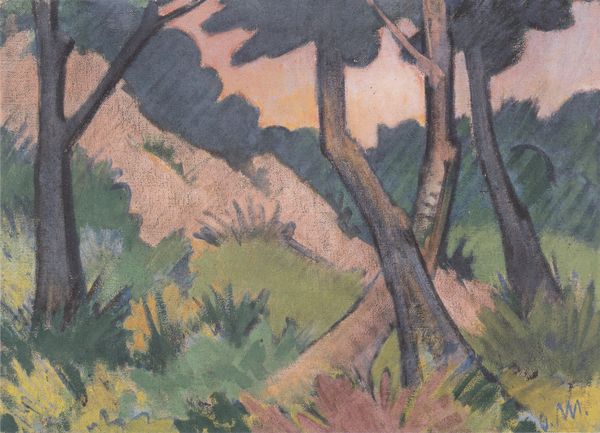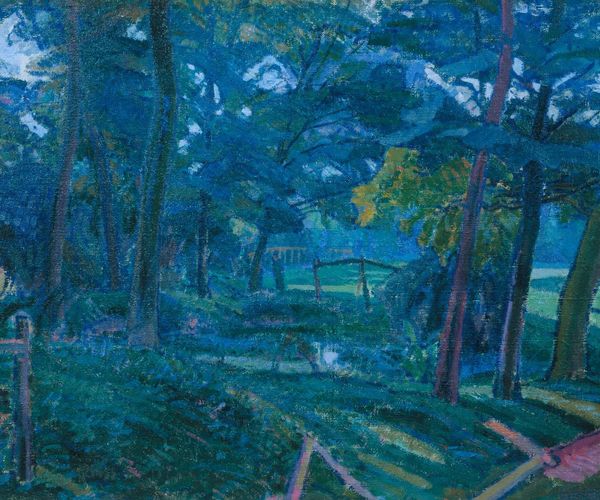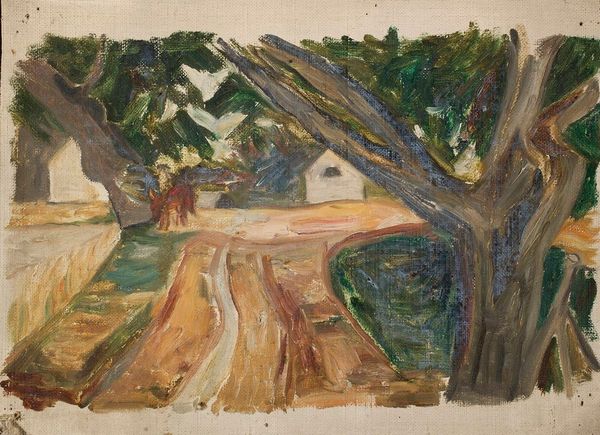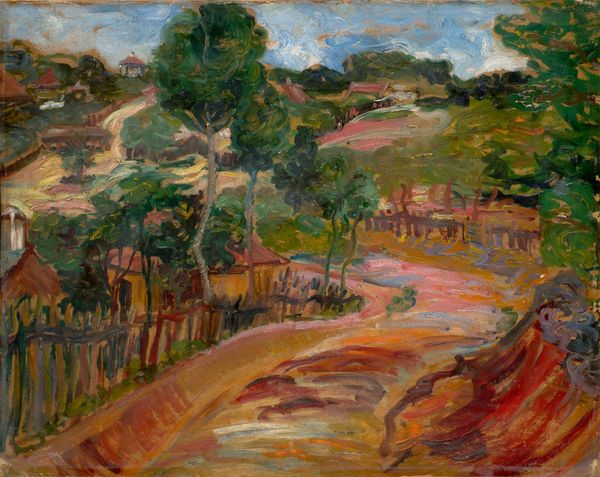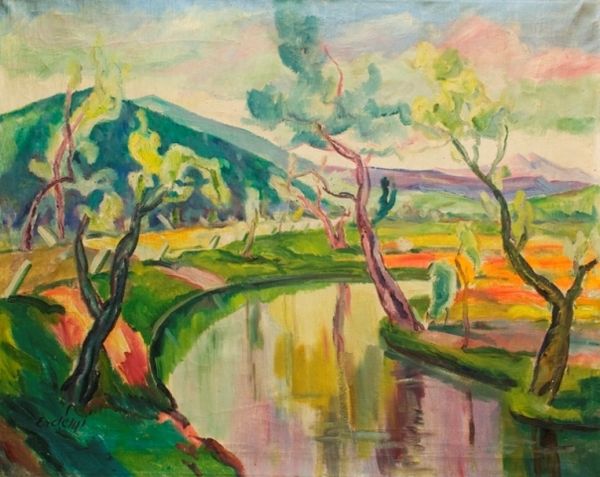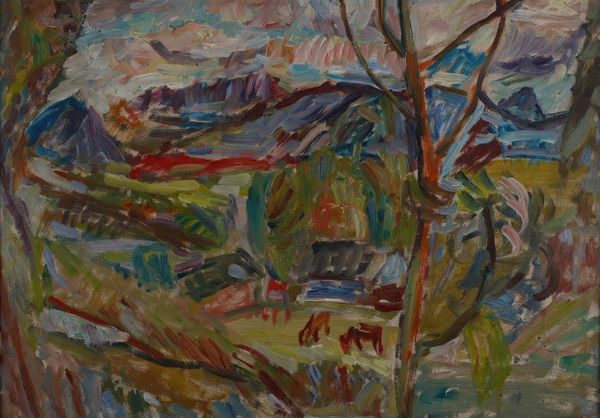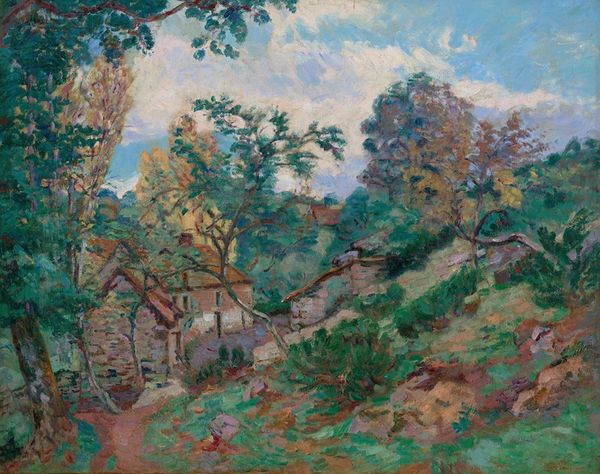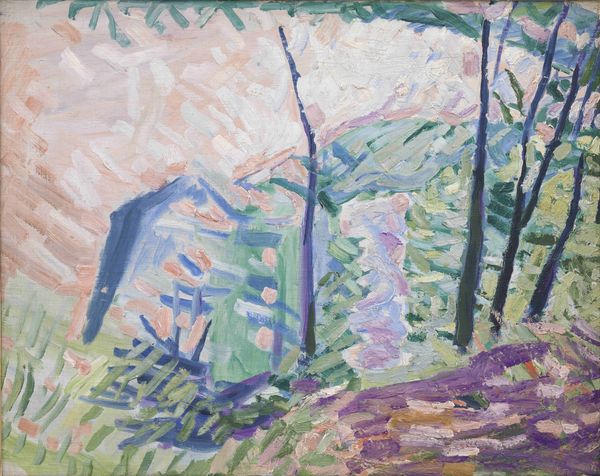
Copyright: Public domain
Editor: Here we have Henri Le Fauconnier's 1943 oil painting, "Village forestier Grosrouvre." It's an intriguing landscape, shrouded and obscured, almost melancholic. What symbols or deeper meanings do you think we can draw out from this piece? Curator: The overarching symbol is enclosure, isn’t it? The forest is a potent archetype representing both shelter and the unknown. Le Fauconnier positions the viewer *outside*, looking *in*. What does the forest withhold, what does it protect? Consider, too, that this was painted during the Second World War. Editor: That definitely casts a new light on it! So, you're suggesting the village represents something shielded from the conflict, or perhaps a collective memory that needs guarding? Curator: Precisely! And note the strategic use of color. The muted tones, almost concealing the village, reinforce this sense of secrecy, as does the composition. The vertical lines of the trees act like bars, and what could be a comforting image transforms into something more…ambiguous. Does that resonate with you? Editor: It does. I hadn’t considered the darker implications, focusing more on the style itself, which I interpreted as a loose Impressionism, perhaps even Fauvism. The expressive brushstrokes almost seemed joyful at first glance. Curator: And that’s a valid interpretation. Joy and melancholy are not mutually exclusive. The red of the foliage stands out starkly and could be related to themes of both life and danger during those years. Visual symbols layer upon each other across time. What stands out to you now, seeing it through this new lens? Editor: I now see a complex interplay between the visible and the hidden. What appeared simple is actually steeped in the anxieties of its time. Curator: Indeed, a painting that invites us to reflect on cultural memory, and how trauma can be both veiled and revealed through art.
Comments
No comments
Be the first to comment and join the conversation on the ultimate creative platform.
